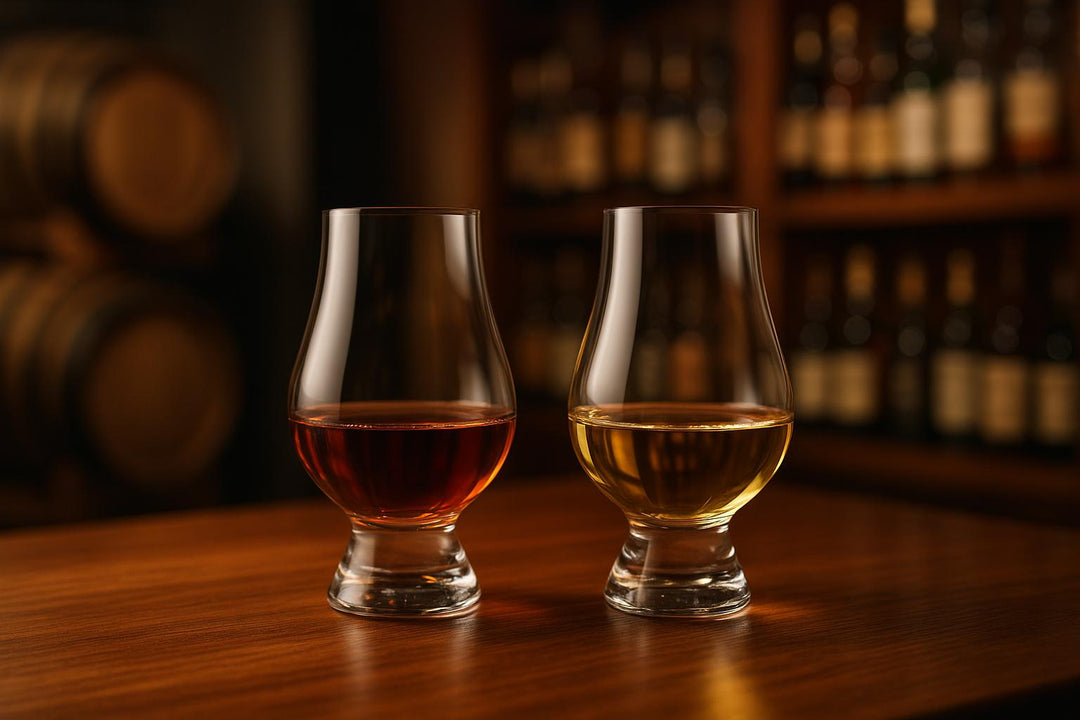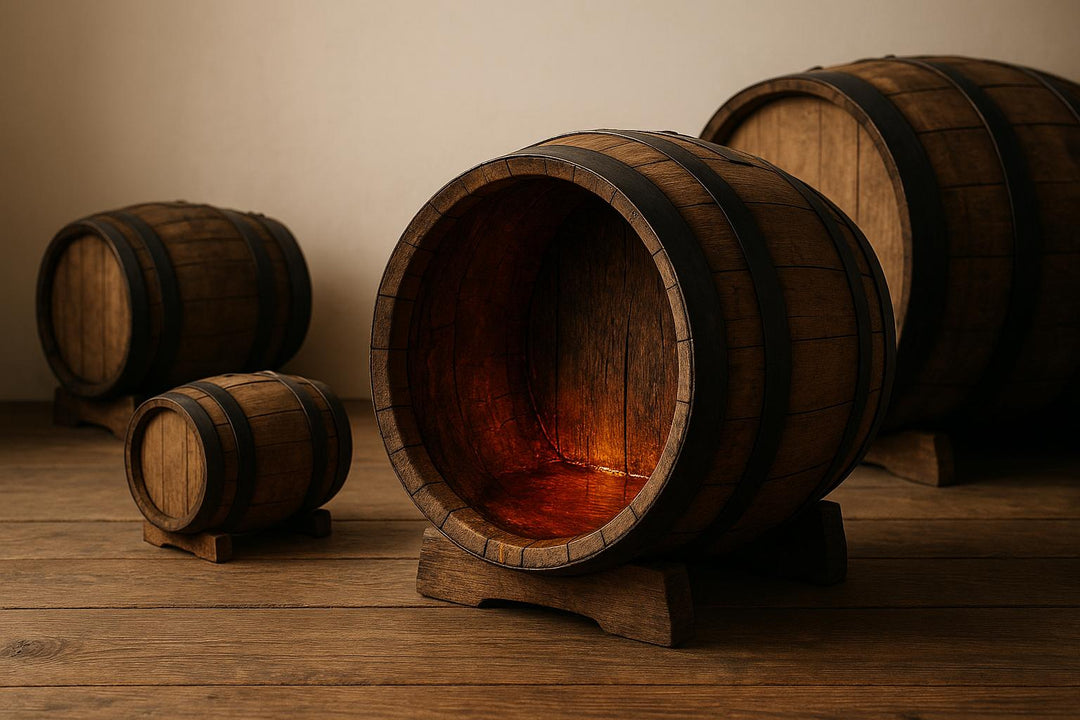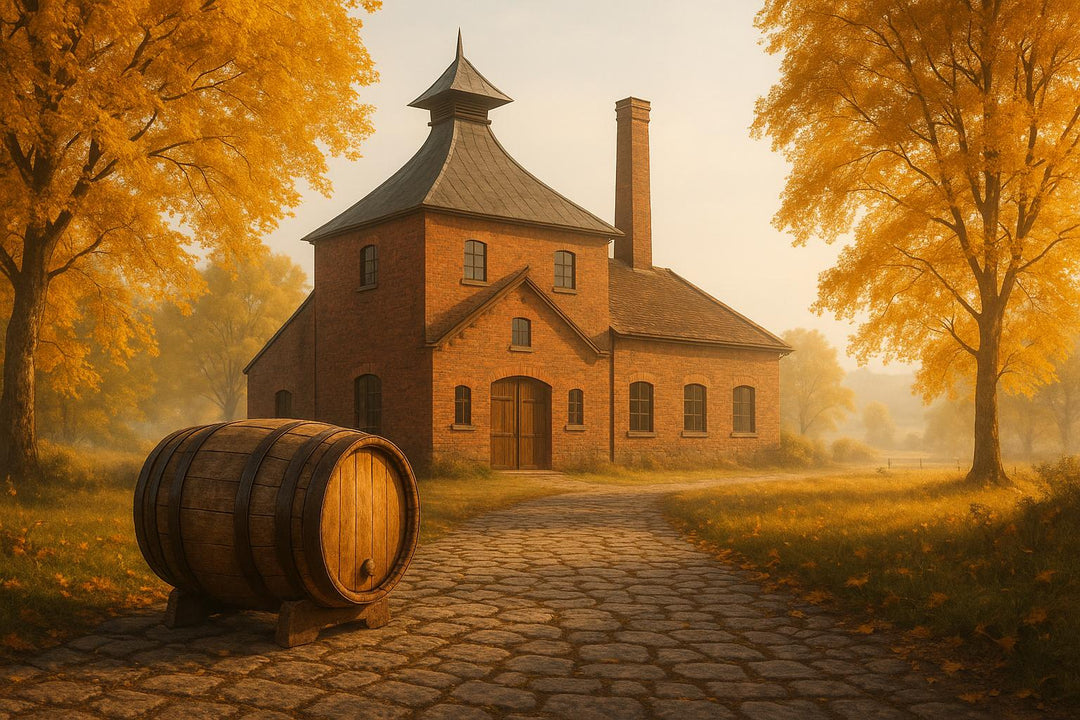George Smith, a man who farmed in the Scottish Highlands, changed how whisky was made in the 1820s by being the first legal maker in Glenlivet. At that time, most whisky was made without permission. Smith got a permit under the 1823 Excise Act, setting him apart. His brave move not only made his work official but also started what we know today as Scotch whisky.
Key Points:
- Illegal Whisky Boom: By the 1820s, Scotland had 14,000 hidden stills every year, due to high taxes and strict rules.
- Smith's Licence: In 1824, for £10 (about £1,220 now), George Smith became the first legal whisky maker in the Highlands, even though he faced threats from secret makers.
- Glenlivet's Natural Edge: The area's clean spring water, good weather, and local barley made the whisky smooth and fruity.
- Production Growth: Starting at 50 gallons a week, The Glenlivet grew to make over 600 gallons weekly by the late 1850s.
- Brand Protection: By 1884, Smith's family made sure they were the only ones who could use the name "The Glenlivet", keeping it away from copycats.
Smith's focus on quality and following the law changed whisky making, making The Glenlivet a big name worldwide. Today, it is still a top name in single malt Scotch, selling millions of bottles each year, showing how Smith's work lives on.
The First Legal Distillery in Glenlivet
The Excise Act of 1823 Makes Big Changes
The Excise Act of 1823 was key to whisky making in Scotland. By cutting taxes on spirits and making it easy to run a legal place, it let distillers come into the light. For George Smith, who ran a secret distillery at Upper Drummin, this was an open door he couldn’t walk by.
Smith’s boss, the Duke of Gordon, helped a lot with this new start. For him, the new law was good and he saw how great it would be to have a legal distillery on his land. He pushed Smith to get a licence, which let him use the 'Glenlivet' name - a big chance that Smith couldn’t miss.
Stepping up, Smith paid just £10 - now about £1,220 - to get his licence, making him the first legal distiller in the Highlands. This move was big not just for Smith, but for all of whisky making.
"After the 1823 Excise Act, George Smith became the first distiller in the Highlands to obtain a license for distillation and, in 1824, he established The Glenlivet on what was once a farm distillery called Upper Drummin." [2]
Making his work legal came with tough spots, with big pushback from those still breaking the law.
Threats from those who still make it wrongly
When Smith chose to follow the law, not everyone was happy. About 200 illegal stills were in the Glenlivet area. These lawbreakers saw Smith's choice as a stab in the back and a real risk to their hidden work. They were scared that Smith's good work might make others want to do the same, which could ruin their secret money-making ways.
Their anger came fast and hard. Smith got threats of harm, including talks that his place - and even he himself - could be set on fire. To keep his work and his own self safe, Smith did not take any risks. He got armed people to watch his spot all day and night. In a move to show he was backed, James Gordon gave him two flintlock duelling pistols in 1824, which Smith had for almost ten years as a clear sign he was set to fight to stay safe.
"he carried a pair of flintlock pistols with him at all times, making it clear he wasn't afraid to use them. His courage set the foundation for our whisky today." [1]
Smith also got help from the Duke of Gordon, who saw how key his legal distillery was for money-making. As time went by, the government's men began to help with Excise work, making Smith's spot even stronger.
Making a Name for Good Stuff
Even with risks and hard times, Smith kept his eye on what was key: making top-notch whisky. Moving away from the uneven and often sharp drinks made by hidden stills, he put care and exact work first in his craft. His move to go legal let him put money into better gear and keep things the same, always.
By the late 1830s, Smith's work was showing results. The Glenlivet distillery was making over 200 gallons per week [1], showing both how much people wanted his whisky and the good name he made. Being legal also let Smith make ties with steady traders, making The Glenlivet's place in the market even firmer.
As an old smuggler from those days said about the much illegal distilling in Glenlivet:
"I suppose there were not three people in Glenlivet in those days who were not engaged directly or indirectly in the trade." [3]
George Smith made a big choice to make his work legal, and that changed how whisky was made in the area. He showed that making whisky in a legal way could make money and last long. He made a new rule for others, leading to a better road for whisky in Scotland.
Building Glenlivet's Reach
Making More Whisky
At first, George Smith's legal whisky place did well, but big wins meant big tests. From 1824 to 1859, how much they made rose from 50 to 600 gallons each week, needing a shift to a bigger place at Minmore. This jump in how much they made set the stage for major partnerships that helped Glenlivet grow even more.
Seeing that one spot couldn't meet the need, Smith opened a second place - Cairngorm-Delnabo - in 1849. By 1855 or 1856, both spots were at full go, but still, the want for Glenlivet kept outdoing what they could make. Then, in 1858, a big blow hit - the Upper Drumin spot burned down. Turning this bad turn into a chance, Smith went for a big jump in growth. By 1859, he moved The Glenlivet to Minmore, making it 200 to 600 gallons each week (about 2,730 litres).
The new Minmore spot had twelve washbacks and two pot stills, letting them make up to a huge 93,000 gallons a year - twelves times more than at the start.
Teaming up with Andrew Usher & Sons
As the making hit its top, moving into new places to sell was key. Here comes Andrew Usher & Co, a big help in making Glenlivet bigger. Andrew Usher Sr. made a strong tie with George Smith, turning into the only one to sell Smith's whisky south of the River Tay. Usher's hard work set up a strong market spot, with regular exports each month boosting sales.
But Usher did more than just sell. He made Usher's Old Vatted Glenlivet (OVG), a mix of whiskies where Smith's was the star. As Iain Russell writes:
"The sons of a spirits dealer, Andrew and John Usher developed one of the world's leading blended Scotch whisky brands, Old Vatted Glenlivet, and played a key role in building the North British distillery." [4]
This team-up showed how Scottish drink makers could grow big, reaching home and far lands through wise ties.
What Made Glenlivet Whisky Stand Out
The Glenlivet's win was not just from smart ads or key team-ups - it came from the top-notch drink itself. Smith used clean spring water, big copper stills shaped like lamps, and new American oak barrels to make a drink that was smooth and fruity, different from the rough and mixed drinks made by hidden makers. Even kings and queens took note, making it more known.
These new steps in making drinks, along with smart ties, did not just make more drink - they kept the drink's own taste and made its place in the market higher. As Laurent Lacassagne, the boss of Chivas Brothers, said:
"Founder's Reserve brings to life the heart and soul of The Glenlivet - defined by its balanced smooth and fruity flavour that The Glenlivet is renowned for." [6]
The Glenlivet was one of the first to send single malt whisky around the world. They knew early that good Scotch could win hearts way past Scotland. This mix of steady quality and smart plans built the base for the brand's big win across the globe.
Guarding The Glenlivet Name

Gains Draw Copycats
By the 1880s, George Smith's legal whisky was so loved, it drew a lot of clones. Other makers in Scotland started tacking "Glenlivet" onto their names, wanting to lean on its good name. They changed the name a bit or put other bits by it, hoping buyers would think their stuff was the true kind. This rush of fakes made the Smiths take strong law steps to save their mark.
The 1884 Law Win
With more and more fakes showing up, the Smiths took it to court. After a long fight, they won big in 1884, being the only ones allowed to use "The Glenlivet" label. While others could use "Glenlivet", only they could use the "The."
The Duke of Gordon, who had always backed George Smith, helped a lot in this fight. He even let them use his coat of arms on their bottles. In his words:
"By His Grace's permission, the Ducal arms, on the seal and label, will distinguish the Real Glenlivet from all others." [3]
This win in court was not just over a name - it was key in keeping the history that started in 1824 safe. It made it clear who made the real whisky and who was just copying.
Real vs Copies: Main Changes
The court's call out showed big changes between the true Glenlivet and the ones copying it:
| Aspect | The Glenlivet (Original) | Imitators |
|---|---|---|
| Law Stand | Got the first legal paper in Glenlivet land (1824) | Got papers mostly after and not in that land |
| Name Use | Only one with the right to have "The Glenlivet" name | Can only use changed or joined names |
| What's In It | Only uses all malted barley | Often mix with other bits like wheat or rye |
| Known For | Made strong by high lord's support | Lean on glory not their own |
Even sneaked in bottles of the first Glenlivet were so loved that they sold for more cash than some okayed Lowland alcohols [7].
Though the law tried to keep it safe, some still used the Glenlivet name for gain. In 1890, Mackenzie & Co. paid a big £600 to add "-Glenlivet" to their Dailuaine Distillery name [3]. This large price showed how big the Glenlivet brand had grown. The Smiths and those after them kept a sharp watch, knowing that keeping the name was key to keep what George Smith had made.
sbb-itb-128d6c1
The Glenlivet's Big Effect Today
Beating World Issues
The 1930s were hard, with the Great Crash making many drink makers close shop. But under Captain Bill Smith Grant, The Glenlivet got through these hard times, including the dry law in the US and the big war. By keeping their eye on top work, they came out on top. By the mid-1900s, The Glenlivet made up half of all Scotch malt sold in the US. These big tests not only proved the drink maker's strong will but also set the base for the high place it holds now.
The Glenlivet Story Now
For fans of whisky today, The Glenlivet is still the top pick from Speyside. The drink maker keeps celebrating its rich past while also going for new highs with top-rate drinks. Big hits include the 40 Year Old, worth a lot at £4,600, and the very high-end Eternal Collection First Edition 55 Year Old, with a huge price of $55,000. These drinks show close to 200 years of great work, starting with George Smith's first dream. Kevin Balmforth, The Glenlivet Cask Master, talked about how big these drinks are:
"The Glenlivet 40 Year Old represents more than four decades of dedication and craftsmanship from our team. This release embodies the trailblazing spirit of The Glenlivet while honouring the foresight of those who began this journey 40 years ago." [8]
These new things help keep The Glenlivet's rich past alive in today's whisky world by mixing old ways with fresh charm.
How to Find Glenlivet Bottles Now
For both those who love and gather whisky, The Really Good Whisky Company gives a hand-picked list of the best from The Glenlivet. From old key picks to rare, one-time only bottles, their know-how lets you look into every part of this big name brand.
The whisky market has grown a lot, with top whisky prices going up by about 280% in the past ten years [5]. Moving forward, the world whisky market is set to rise from $34.70 billion in 2024 to $57.14 billion by 2032 [5]. At the core of this boom is The Glenlivet, a brand that keeps pulling in both long-time fans and new followers.
Alan Winchester, The Glenlivet’s head maker, shows the bold soul of its starter, George Smith. Thinking of the brand's long story, he said:
"The majority of my career has been spent continuing the legacy of our founder George Smith, so it's really interesting to have the opportunity to uncover even more secrets about our illicit past and tell new stories about the role scotch has played in defining Scottish culture." [9]
From its start as the first true distillery in Glenlivet valley to being the top single malt Scotch whisky brand in America, The Glenlivet always shows that good taste and real worth last forever. Each bottle acts as a link to George Smith’s early dreams, tying whisky fans to a history that still grows strong.
DID HE SAY WHISKY? - The SITE of the ORIGINAL GLENLIVET DISTILLERY
George Smith's Big Mark on Whisky
In 1824, George Smith made a bold choice that would change the way whisky was made in Scotland. He was the first to make whisky legally in the Glenlivet area, setting a new mark for open work and top-notch whisky. This was a hard task - Smith faced big threats from those who made whisky but did not follow the law, who saw his move as a turn against them. Yet, his will to stay on the right side of the law changed The Glenlivet and set a way for others in Scotland to do the same.
Smith's touch was deep. His whisky, light and fruity, got liked by many fast, making more people make it. By the late 1850s, The Glenlivet made 600 gallons a week - a huge jump from the 1830s. The name Glenlivet got so well known that others in Strathspey started to make whisky like his. Over time, "Glenlivet" stood for good Highland pot still whisky, showing the high level and respect Smith had built.
Now, the numbers show how big Smith's idea was. The Glenlivet sells 6 million bottles each year and can make 10.5 million liters. It's the world's second top-selling single malt whisky and is number one in the United States, where it first got big in the 1850s.
But Smith's mark is more than just sales and high praise. His choice to put law and quality first set the base for the whisky world’s great name. The rules he set in 1824 still shape every legal whisky place, every Scotch whisky bottle, and every big win the field gets today. George Smith's brave vision is key to today's whisky making.







Leave a comment